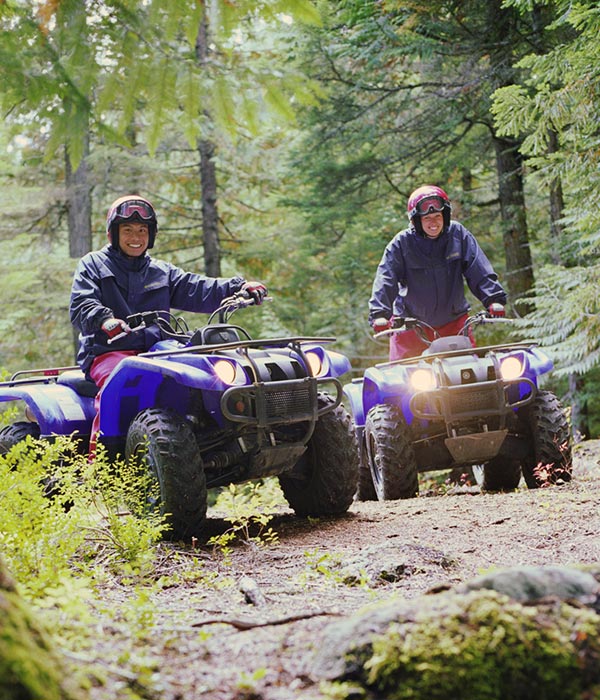
All-terrain vehicles (ATVs), or four-wheelers, are a big part of recreational activity in the South. We ride around on them for fun or use them to go mud riding in addition to more practical uses like getting around the hunting camp. They are often seen more as a “toy” or means of entertainment, but their use can result in serious injury and even death if the safety standards are ignored. The American Academy of Orthopaedic Surgeons (AAOS) reports that there were more than 150,000 ATV-related injuries in 2007 alone, and 10,281 reported deaths from 1982 to 2009. Although injuries are most common among men who are 18 to 30 years old, 27 percent of injured ATV users are children.
Although every state has laws and regulations in place for ATVs, they vary from state-to-state and are often ignored. Safety regulations and suggestions are there to keep you safe, so it’s important to follow them. Here are some things to keep in mind when riding an ATV.
1. Extra safety precautions should be taken for children.
Because ATVs have large tires and a high center of gravity, they can be dangerous for anyone, but children in particular may have difficulty controlling them. Many ATV accidents occur as a result of the vehicle tipping or flipping over. Young children are often too small and aren’t strong enough to control to vehicle in the event that it begins to tip, and they may not be coordinated enough to operate the ATV correctly. AAOS recommends that children under the age of 12 should not operate ATVs, and children ages 12 to 16 should be supervised by an adult and should not operate vehicles with an engine size of 90cc or greater.
2. Never ride an ATV without protective gear.
Helmets can reduce the risk of head injuries, but many of those who ride ATVs don’t wear them. In addition to helmets, you should also wear glasses or goggles to protect your eyes, gloves with padded knuckles, boots, and long pants with a long-sleeved shirt. You can also get clothing and gear specifically made for ATV riding. Wearing protective gear helps to reduce your chances of injury if you do happen to fall from the vehicle.
3. Ride at the appropriate places and times.
You should never ride a four-wheeler on pavement or a public road. They are meant for off-road use only. You should also avoid riding ATVs after dark. Four-wheelers are difficult to control, and it may be difficult to see obstacles in your path when it’s dark outside. If you collide with an object or another vehicle, it could result in an injury or death.
4. Learn how to operate the vehicle correctly.
Most states (including Louisiana) do not require a license to operate an ATV. This means that anyone can legally operate one, even with little or no training on how to operate the vehicle correctly. Because we often use them for recreation, we tend to forget that they are motor vehicles and can weigh well over 100 pounds. Because they can be difficult to control, there is an inherent risk involved even if you follow all of the recommended safety precautions. For your own safety, it is a good idea to take a safety course and learn how to correctly operate a four-wheeler even if your state doesn’t require it.
Many people are unaware of just how dangerous four-wheelers can be. In the South, it’s just something that everyone does, so we don’t take the risks into account. If you do plan on going mud riding or using an ATV for recreational purposes, you need to know that there are risks involved, and you should do everything you can to keep yourself safe.